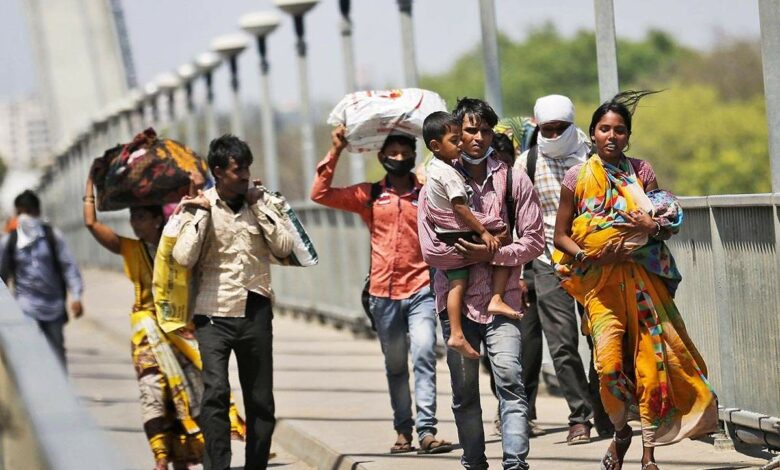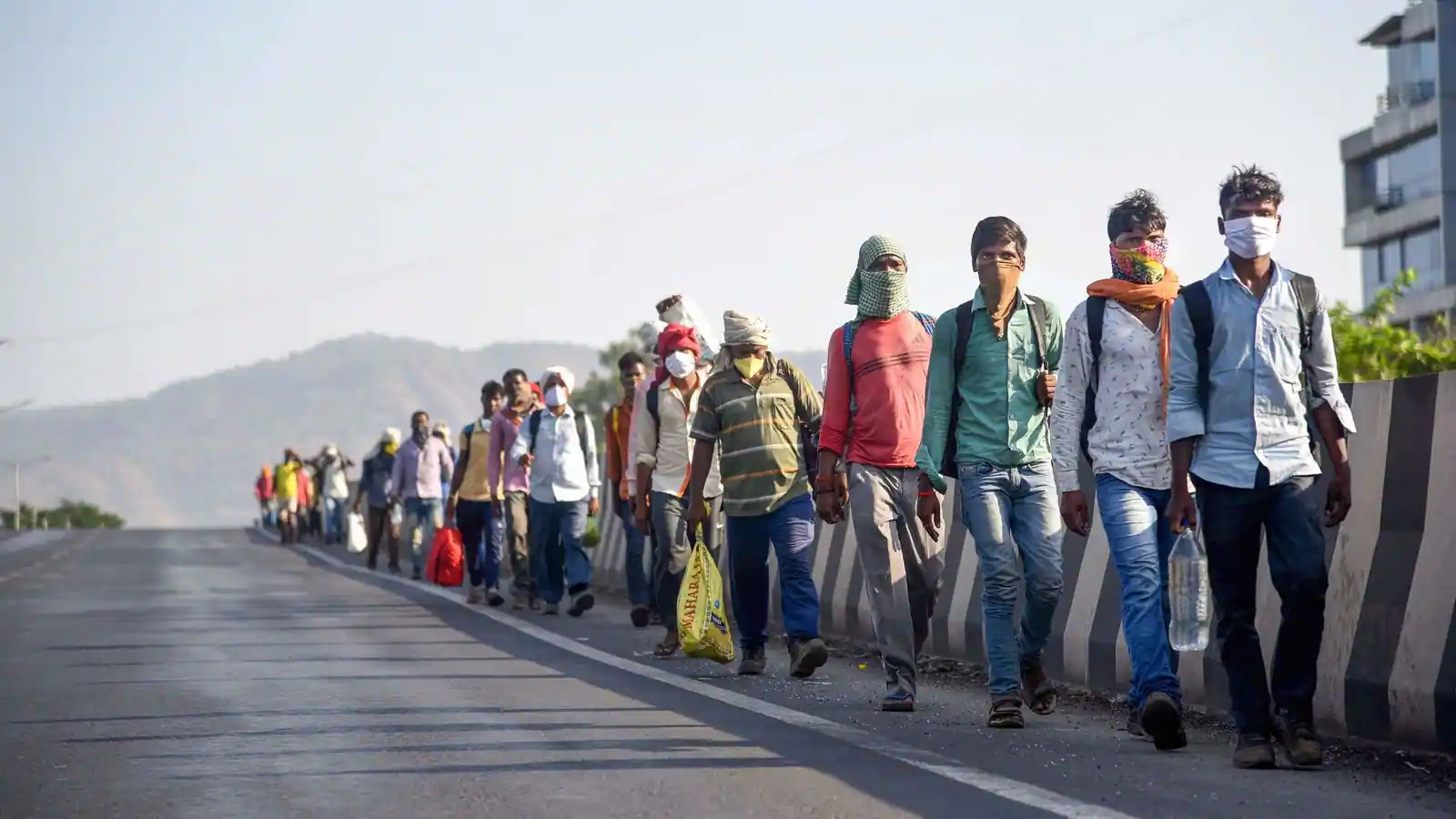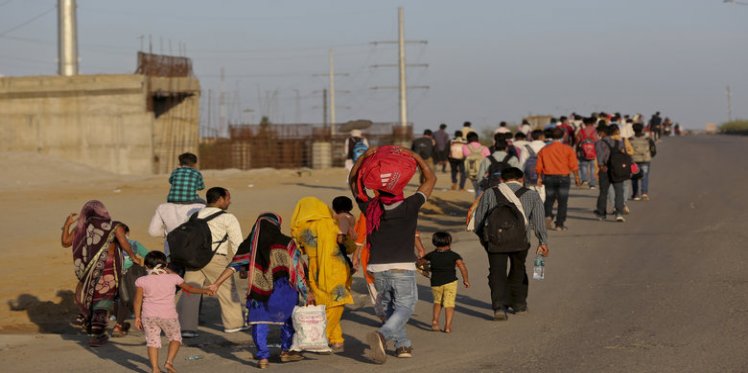
India’s pandemic crisis has had its heart-rending consequences on millions of people across informal sectors. They have been deprived of substantial living and derailed due to the government’s ineptitude in progressing valid provisions. Over the past year, we perceived insights on the migrant nemesis and how disastrously they got affected by the pandemic’s initial outburst. It foresaw people’s imagination, influential policymakers to amend provisions in the existing policies regulated for their assistance.
The exoneration suffered by the migrant workers cried out for economic and social relief policies, which could have rejuvenated their life to an inspiring path. The policymakers were exceedingly pressurized to augment strategies, deciding the fate of the burgeoning pandemic crisis. While the stance of migrant workers has slightly revocated in the second wave, it is still hampering their life conditions wordlessly. To street ahead in the conversation, we would discuss some of the laws launched by the government which lacked some significant aspects of granting relief.
The Social Security Code 2020 was launched for magnifying the effectiveness of helping the informal sector in evacuating out of the pandemic’s deadly wrath. However, the implementation of the Code had its drawbacks, thus questioned by many economists across India. The Code revolved around subsuming nine regulations, including social security, retirement and employee benefits for informal sectors, fixed-term employees, gig workers, et cetera.
The outlook of the Code aimed at manifesting a national database for unorganized sector registrations of all the workers done on the online portal. The regulation called on for self-certification on these portals when millions of workers are not supremely well-versed with digital literacy and do not have an efficient networking connection. The unorganized sector is diversified across depths and boundaries in India; hence the incorporation of the Code would be too varied across states. A divisional and equivocal structure couldn’t be administered, creating discrepancies in the law.
The policy didn’t progress comprehensively, which subsides us into the grimace faced by informal workers amidst the pandemic’s second wave. According to statistics, the numbers would reiterate the smooth working of the unorganized sector, but that doesn’t disclose the underlying reality. The operational activities resumed following the initial lockdown last year, but workers’ stance had deteriorated to irrevocable levels, citing a new concern for the government. While the industrial recruitment partly moderated the after-effects, the vast majority was still in the wrath of the pandemic and the policies amended following their turmoil.

A remnant of Vulnerable Migrant Workers; How have their Interests been subsided-
The Indian economy has frequently focused on being urban-centric and uplifting the developments and living standards of the colossal cities. In fact, the Labor Code announced by the Finance Minister of India aimed to extend the support of statutory protection to the unorganized informal sector and the gig economy. In today’s scenario, casual workers in India face an alarming risk of violating their human and labour rights, snatching their dignity of livelihood, the differential gap in wages of urban and rural workers, and intolerable vulnerabilities.
There was no better valuation of their troublesome times than the Covid-19 pandemic when almost 450 million informal workers succumbed to the fear of losing their jobs in a heap to strive.
However, the Code lagged to conspire with several elements of social protection, especially in rural areas, which has centred the vast majority of informal workers. The sluggish development towards social security has enforced vandalism of survival threats to the lower-class community. Although the Code of Social Security envisaged legal provisions for prioritizing the interests of the informal workers, it adversely didn’t impose its attention on the realities prevailing across the sector in India. The laws have been devised on proclaimed strategy and not on the notion of bridging the gap of income and social inequalities.
Why haven’t the migrant workers’ requests been answered yet?
The plight of migrant workers hasn’t reinvented itself since nearly A decade ago. The Supreme Court highlighted the theory on June 29 when it delivered an Insight into how little things have changed. Although the judgment was confined to the policymakers’ social security schemes, it caught the eyes of the public for various reasons. The registration compelled by the SSC 2020 granted migrant workers the opportunity to get eligible for the schemes. However, as they didn’t know the technical ability, cries were left unanswered by the government.
Similar decisions were undertaken by the National Commission for Enterprises in the Unorganized sector, pinpointing ways to commute their demolition and protect the rights of all the working community. The circulant migrants were specified as the occupationally vulnerable community as they procured the interests of more than 60 per cent of people.
Barring Agriculture, migrant workers are considered as a disadvantaged segment across sectors. The Covid-19 pandemic has reflected; how drastically the commonalities between the vulnerable informal workers and the circulant migrant workers exposed the faulty lines in the social security schemes. Are their problems just confined to economic depletion, or do additional vulnerabilities torture them? Their vulnerabilities weren’t mitigating pre-lockdown and have aggravated since then. While they are being overshadowed of work amidst their cultural identity, their stance in the community is souring.
Alongside job losses, they are lagging on several frontiers, pushing millions of households into poverty. The work doesn’t exhibit cohesiveness, indebtedness as alleviating measures, and low-income pressures contributing equitably to their ultimate downfall. The government stated its adroitness, claiming that adequate relief funds have been provided when the large chunks of funds are restricted to a few households. The benefits of the social protection scheme as hyped were nowhere to be seen.

Why are Social Security Schemes An Inevitable Requirement?
Indian migrant workers are shifting jobs frequently and not restricted to an identifiable employer. In such a scenario, a contributory social framework would not be practical as advisors have claimed it as helicopter money or charity. The appalling crisis must have drawn the government’s intuition to incorporate a devised and guaranteed social protection scheme. Significant promises have got made in the past, but neither has the affliction evaded nor the troubles got diminished. The fallacy has misconceived the proclaims of the workers, and the inevitable requirement of policies has elevated with time.
In 2009, when the global financial crisis wracked the world’s economies, the United Nations had aligned a proposal of bolstering the demand at the groundwork of the economic cycle, the silver lining out of the catastrophe. It reverberated the social protection floor initiative aimed at uplifting the mediocre class out of poverty.
According to the ILO, the Advisory Committee’s report has pointed out the importance of the labour section and how it raises India’s dignified representation in the world. A presumed narrative of augmenting an SPF during the economist’s crisis should get the green light following migrant workers’ contribution to establishing India’s infrastructure and industries. Their tireless efforts on developing roads and efficient performance in factories are being far-off neglected by the jarring politicians.
Undoubtedly, even before the crisis, the workers were reeling from the impacts of an arrogant government willingly not spending money on their social protection. It delineated a reverse trend on public expenditure, as the estimates have evaluated the underlying distress. The social protection’ expense was the lowest in 2019-20, withstanding 1.28 per cent.
It is kosher that the government should have redeemed itself by invoking the right to social security rather than carrying out ad-hoc schemes. These one time investments were inadequate and trifling as GDP’s percentage, and revamping the strategy within a definite timeframe. Ending the painful yet agitating moments would need the realization of wrongs, and implementation of protection, embedding the ILO’s suggestion 202 and aiming to induce it in the Indian Constitution.
Blaming the Pandemic For Lack of Social Protection is Another Point in the Endless List of Government’s Excuses. Will the migrant workers get justice?





